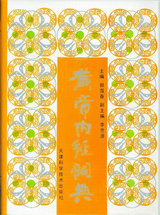
主要责任者: 郭霭春;李思源
责任方式: 主编;副主编
出版者: 天津科学技术出版社
出版地: 天津
字数: 986 千字
页码: 1-1214
开本: 32
中图分类号: R221-61
装帧: 精
语种:中
定价:48.00
出版时间:2000-10
丛书多卷书否:否
书目简介:本册工具书共收录5888条词条。
被引频次:110
| 词条 | 皇帝内经词典 |
| 类别 | 中文百科知识 |
| 释义 |  主要责任者: 郭霭春;李思源 责任方式: 主编;副主编 出版者: 天津科学技术出版社 出版地: 天津 字数: 986 千字 页码: 1-1214 开本: 32 中图分类号: R221-61 装帧: 精 语种:中 定价:48.00 出版时间:2000-10 丛书多卷书否:否 书目简介:本册工具书共收录5888条词条。 被引频次:110 |
| 随便看 |
开放百科全书收录579518条英语、德语、日语等多语种百科知识,基本涵盖了大多数领域的百科知识,是一部内容自由、开放的电子版国际百科全书。